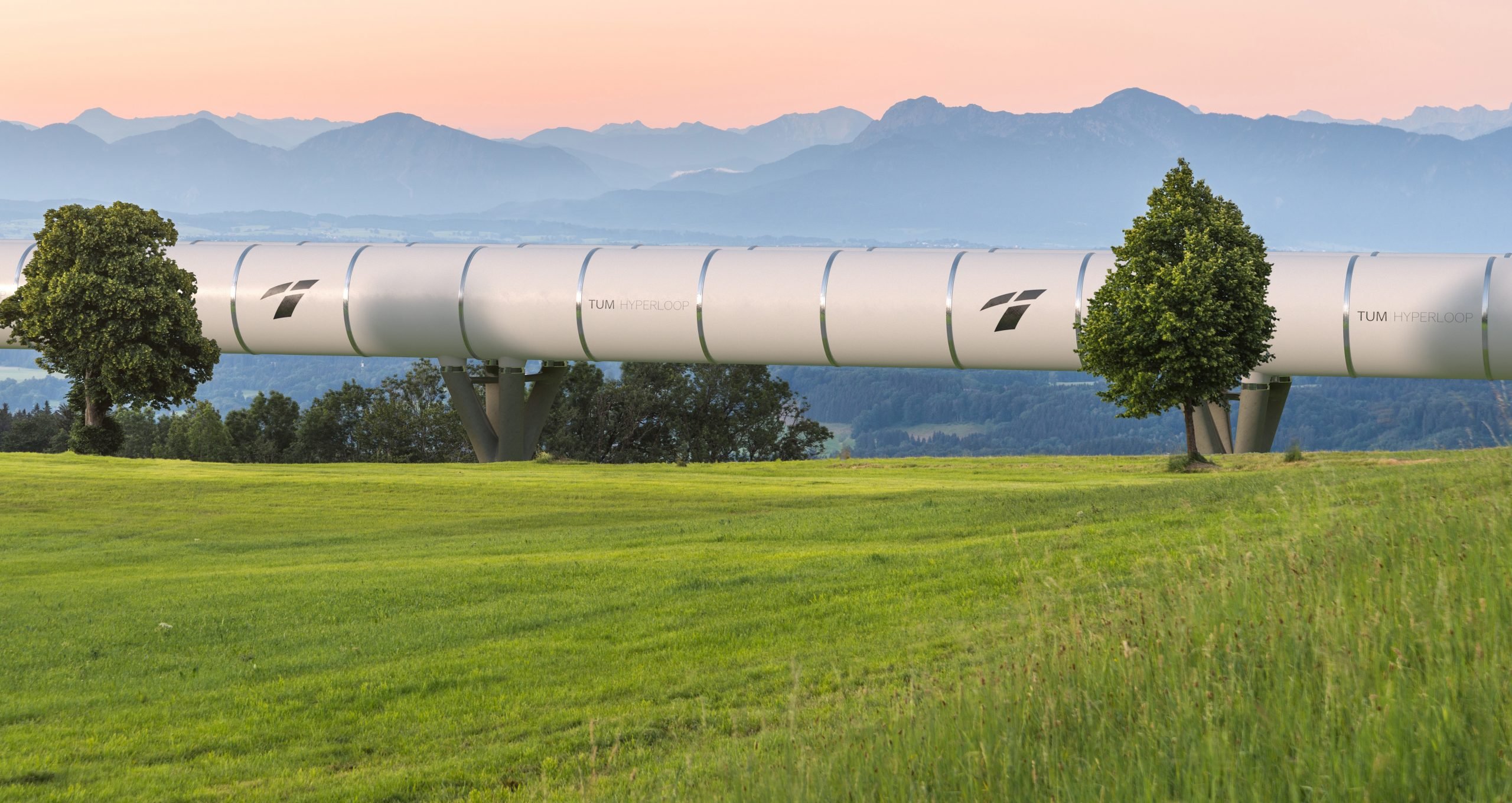
In July last year, the Hyperloop team from the Technical University of Munich (TUM) in Germany won for the fourth time in a row the international Hyperloop competition held in Los Angeles. The team’s pod reached a record speed of 482 kilometers per hour in the 1,200-meter long test vacuum tube on the grounds of SpaceX (as IO also reported). With this speed, the students have not quite reached their goal of exceeding the speed of sound. Which is why the researchers now want to work with other scientists to build a 24-meter-long test vacuum tube and a full-scale prototype of the passenger shuttle.
Speed is not the only issue for the group though. They also want to explore how the Hyperloop can become a safe, affordable, and sustainable means of transport for the future. In order to achieve this, they have developed, among other things, a levitation system for the ‘pod’ (the shuttle cabin in which passengers are transported through a vacuum tube) and also a prototype of a test vacuum tube made of ultra-high performance concrete (UHPC).
Full-size prototype
The first phase is scheduled to last two years. System analyses will initially be carried out ‘to ascertain the feasibility and potential of the concept in Europe, and develop and test Hyperloop-related technologies,’ the researchers state. In addition, a 24-meter long test tube and a prototype pod on a 1:1 scale are to be built on the grounds of the Ludwig Bölkow Campus in Taufkirchen / Ottobrunn in Germany. The expertise of various TUM faculties, such as materials science, civil engineering, and drive systems, will also be incorporated into the program.
Prof. Agnes Jocher, who has held the professorship for Sustainable Future Mobility since the beginning of July, is in charge of this program. “The Hyperloop has the potential to offer a high-speed, electric alternative for medium-length distances, thereby offering more sustainable and environmentally friendly modes of transport,” she explains. “Yet more research is needed to test this hypothesis. For example, consideration must also be given to the manufacture and construction of the system.”
Scalable end-to-end system
Gabriele Semino is involved in the program as a research assistant and has been part of the TUM Hyperloop team since 2017. He has already joined with TUM team in Los Angeles three times so far. “The competition was mainly about prototypes that were designed for speed,” he explains. “In this program, we are now pursuing a scalable end-to-end system that encompasses all aspects of cost-effectiveness, sustainability, and safety. In any case, the knowledge we have gained over the years with respect to both the Hyperloop materials and prototype construction is indispensable to us.”
The so-named ‘Demonstrator‘ should be as big as a real passenger pod of the future, unlike the previous prototypes. “Our last prototype weighed less than 70 kilograms, but now it’s several tons,” Semino goes on to explain. The test vacuum tube will be about four meters high, including the foundations. Validating the concept with the help of the Demonstrator is just the first step. At a later stage, a longer test track will be built for subsequent experiments.
The Hyperloop concept
With the hyperloop, a high-speed train is supposed to be capable of traveling at approximately the speed of sound in a tube that is partially under vacuum pressure. SpaceX founder Elon Musk is the father of this concept. Student teams from all over the world compete against each other with their self-made pods in the yearly SpaceX Hyperloop Pod Competition.
Students will be given even more support in the future. The Hyperloop research program was launched at TUM’s new Faculty of Aeronautics, Space and Geodesy. The project is being funded by the Hightech Agenda Bayern, an initiative of the government of the Free State of Bavaria.

